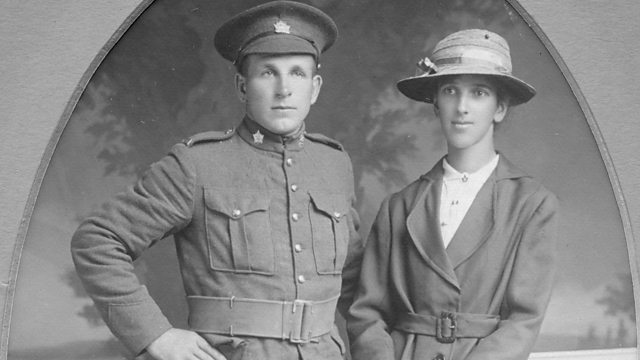De Lank Quarry, Bodmin Moor: Canadian Cornish
The Cornishmen who were part of the Canadian Expeditionary Force
The Canadian Expeditionary Force was initially a field force created by Canada for service overseas in World War One.
Cornishman William Henry Bennett was among many who had travelled abroad to seek their fortunes as the mining industry collapsed at home. Having left St Agnes on the north Cornwall coast, William was living in Butte City, Montana, working as a miner.
He travelled to Lethbridge, Alberta, Canada enlisting on 22 May 1916 initially with the Canadian Mounted Rifles later transferring to the Princess Patricia’s Canadian Light Infantry that same year.
Soldiers were legally ‘attested’ into the CEF in order to serve overseas. The attestation paper for Private William Henry Bennett included a medical examination showing the 23-year-old was 5 feet and 11½ inches tall, had a light complexion with blue eyes and brown hair. The forms show William had a distinctive scar on his left shin, perhaps from an earlier injury in the mines.
Most of the men of the Canadian Expeditionary Force volunteered ahead of conscription (1917) and around half of them were born in Britain.
Trevor Trenough's staunchly Methodist grandfather John 'Rich' Rowe was a Cornish quarryman, working in Canada at the outbreak of World War One: "This was just another foray into the world of industry from a place that had no industry at the time,” he explains.
Sapper John ‘Rich’ Rowe (Service no 2500439) joined the 8th Platoon, B Company, Tenth Battalion Canadian Railway Troops. Canadian railway units played a major role in the construction and maintenance of railways for the British Army areas in France and Belgium, no doubt the practical skills of experienced miners and quarrymen helped this significant logistical task.
“Canada had been expanding its railway network since the late 19th Century and the expertise that was available in Canada was extensive due to that huge railway building programme that existed prior to 1914. Canada played a leading role in providing the troops for the construction and operation of railways on the fighting front in France and Belgium,” says Dr Kent Fedorowich from the University West of England.
After the war, quarryman John Rowe never returned to Canada. He came back to England, demobbed from the Canadian Army and returned to his home at St Breward in North Cornwall and got married.
John ‘Rich’ Rowe’s army hat however did finally come to a sorry end.
"It was a 'Guy Fawkes' day we were preparing the fire and we had everything ready to light up. I took my Granddad's hat off, put it on the fire went home and had tea. Came back and lit the fire and somebody said to me about ten minutes later “Trevor, is this your hat?” The top had burned out. I must have cried, it was the end of that hat! What an end to the hat that went through a world war and it got burned at Blisland beside the River De Lank, end of story,” Recalls Trevor Trenough.
The Canadian Expeditionary Force lost more than sixty thousand men during the war, representing over 9% of the 619,636 who enlisted.
William Bennett of St Agnes, Cornwall was killed in action on 30 October 1917, aged 23 at Passchendaele with no known grave. His name is one of the fifty-five thousand etched on the Menin Gate at Ypres in Belgium – men who had fallen at some of the most decisive battles of the war but with no known grave.
Location: De Lank Quarry, Bodmin Moor (where John Rowe had worked before leaving for Canada, then CEF in WW1), PL30 4NQ
Image: Cornish CEF John ‘Rich’ Rowe and wife Emmie, courtesy of Trevor Trenoweth
Duration:
This clip is from
Featured in...
![]()
�鶹�� Radio Cornwall—World War One At Home
Places in Cornwall that tell a story of World War One
![]()
Soldiers from Different Nations—World War One At Home
ANZAC and Commonwealth troops
More clips from World War One At Home
-
![]()
The loss of HMY Iolaire
Duration: 18:52
-
![]()
Scotland, Slamannan and the Argylls
Duration: 07:55
-
![]()
Scotland Museum of Edinburgh mourning dress
Duration: 06:17
-
![]()
Scotland Montrose 'GI Brides'
Duration: 06:41







